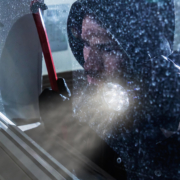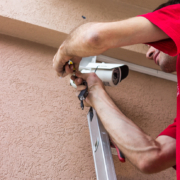Chilling Consequences: How Cold Weather Impacts Business Security Systems and What You Can Do About It
As the winter season sets in, businesses across the globe brace themselves for the challenges posed by cold weather. While most concerns revolve around issues like frozen pipes and increased energy costs, one aspect often overlooked is the impact of frigid temperatures on business security systems. In this article, we’ll explore the chilling consequences cold weather can have on security systems and provide actionable insights to safeguard your business against potential threats.
Temperature Sensitivity of Security Equipment:
Many security devices, including cameras, sensors, and access control systems, are sensitive to extreme temperatures. Cold weather can cause these devices to malfunction or operate at suboptimal levels, compromising the overall security of your business premises.
Battery Performance Takes a Hit:
Batteries play a crucial role in powering security systems, and cold weather can significantly affect their performance. Low temperatures can lead to reduced battery life, slower charging times, and, in some cases, complete failure. This is particularly critical for businesses that rely on wireless security devices, as batteries are their lifeblood.
Icy Obstacles and Visibility Issues:
Snow and ice accumulation can pose serious challenges to the effectiveness of surveillance cameras. Accumulated ice on camera lenses can distort or block the view, rendering them ineffective in monitoring and recording activities around your business. Ensuring regular maintenance and having a plan in place for de-icing is essential.
Door and Window Vulnerabilities:
Extreme cold can impact the structural integrity of doors and windows, making them more susceptible to forced entry. As temperatures drop, the contraction and expansion of materials may weaken the overall security of these entry points. Regular inspections and reinforcement measures become imperative during winter months.
Remote Monitoring Challenges:
For businesses relying on remote monitoring, cold weather can present connectivity challenges. Snow and ice accumulation on antennas or communication equipment can disrupt signals, leading to intermittent or complete loss of remote access. Implementing weather-resistant equipment and regular checks can mitigate these risks.
Preventative Measures to Safeguard Security Systems:
a. Temperature-Resilient Equipment: Invest in security devices designed to withstand a wide range of temperatures. Look for systems with built-in heating elements to prevent freezing and ensure consistent functionality.
b. Regular Maintenance: Implement a routine maintenance schedule for all security equipment. This includes cleaning cameras, inspecting wiring, and ensuring that all components are in optimal condition.
c. Battery Management: Keep a close eye on battery performance during colder months. Consider implementing a battery backup system or using cold-resistant batteries to ensure uninterrupted power supply.
d. Weatherproofing Entrances: Strengthen doors and windows to withstand temperature-induced stress. Weather stripping and reinforced materials can add an extra layer of protection against potential break-ins.
e. Remote Monitoring Solutions: Choose remote monitoring solutions with robust connectivity features. Implement redundant communication channels and regularly test remote access to ensure consistent performance.
As the winter chill sets in, businesses must be proactive in addressing the unique challenges posed by cold weather to their security systems. By understanding the vulnerabilities and implementing the recommended preventative measures, you can ensure that your business remains secure and resilient even in the face of freezing temperatures. Stay ahead of the cold curve and fortify your security systems to safeguard your assets and maintain peace of mind throughout the winter season.











Leave a Reply
Want to join the discussion?Feel free to contribute!